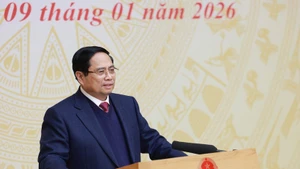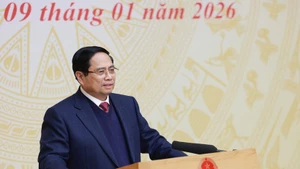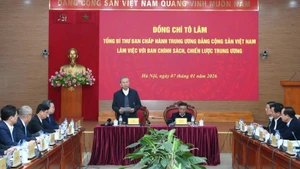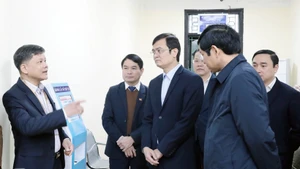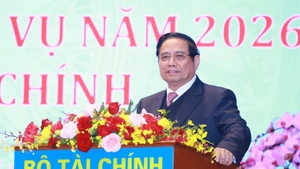Optimising effectiveness
In a market with increasing demands for transparency and efficiency, the application of technologies such as Building Information Modelling (BIM) and Geographic Information Systems (GIS) is becoming indispensable.
Citing a series of major global projects, Dr Ta Ngoc Binh, Head of the Digital Investment and Construction Economics Department (Construction Economics Institute, Ministry of Construction), stated that BIM technology helped the Crossrail line (now Elizabeth Line) in the United Kingdom save hundreds of millions of pounds by synchronising data management, reducing design conflicts, and optimising construction. In Singapore, BIM has been integrated into the e-permitting system, cutting project appraisal times by up to 50%. In the transport sector, metro projects in Helsinki (Finland) and the Queensferry Crossing bridge (Scotland) have used BIM to control progress, costs, risks, and plan long-term maintenance. In Viet Nam, BIM has initially proved effective in projects using state funds, social housing developments, and complex urban infrastructure.
Commenting on the application of BIM in urban railway projects in Hanoi, Nguyen Tien Thong, Head of the Technical Team (Project Implementation Management Department 1, Hanoi Urban Railway Management Board), said that although the application is still in its early stages, it has helped better visualise future infrastructure. BIM also lays the foundation for forming “digital assets” in parallel with physical ones, thereby enhancing project value and supporting long-term operations. With the roadmap making BIM mandatory in public investment projects from 2024 and specific policies for the railway sector, the application of BIM is expected to become more seamless and effective.
Building a comprehensive ecosystem
Like many advanced countries, Viet Nam could aim to integrate BIM throughout the entire construction permitting process, linking planning and interconnecting management databases. However, implementation still faces many challenges, not only technical but also human and organisational.
Tran Phuc Minh Khoi, Deputy General Director of Portcoast Consultant Corporation, noted that BIM will not be effective if investors continue to operate under traditional models, resist change, lack interdisciplinary coordination, and have no clear data strategy. A common issue facing large infrastructure projects in Viet Nam is fragmented data, with datasets often unable to “communicate” with each other. Even a BIM model, if not placed in the geographic, social, and infrastructural context, could remain a disjointed and unconnected data block.
“In the future, BIM models will no longer stand alone but will be connected with GIS to position them in real-world space, with IoT (Internet of Things) to update real-time operational data, and with AI (Artificial Intelligence) for analysis, forecasting, and optimisation. At that point, we can envision a dynamic digital model in which all project data is digitised and interconnected to support rapid and accurate decision-making,” said Tran Phuc Minh Khoi.
Based on the implementation experience in Viet Nam, Dr Ta Ngoc Binh pointed out that the major barriers to digitalisation include the costs of software, infrastructure, training, and especially leadership mindset. According to Dr Binh, to strongly develop BIM in the construction sector, a comprehensive ecosystem needs to be built around three pillars. First is institutional improvement — establishing clear legal frameworks and detailed guidelines for applying BIM in design appraisal, construction permitting, and specialised projects. Second is human resource development — the key factor in digital transformation in construction. And third is mastering technology through cooperation with reputable domestic and international organisations to deeply integrate BIM with GIS. The institute will build a digital data platform and develop BIM application guidelines to support planning, appraisal, permitting, and project management in an intelligent, efficient, and sustainable manner.

